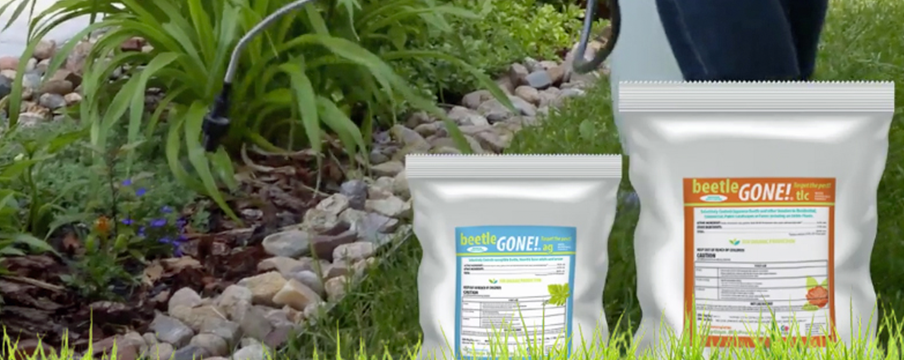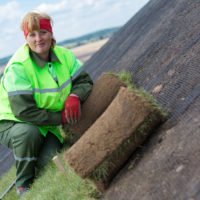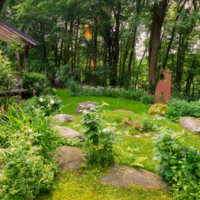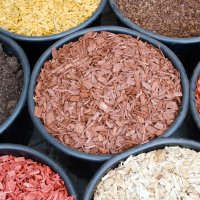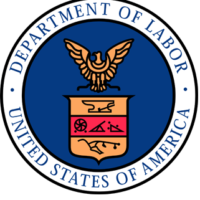
It’s that time of year again when we know spring is right around the corner. This means it’s time to wash the ice melt out of our fertilizer spreaders, service the ‘ol aerator, sharpen all the tools and start planning for the season ahead.
Let’s talk about the first fertilization of the season.
This application should consist of a slow release nitrogen applied at a rate of .5 to 1.0 lb. Per 1,000 square feet. This will awaken the turf from its long winter nap. We want to avoid over application of nitrogen. There are a couple of reasons we don’t want to overstimulate the turf with excess nitrogen: 1. it can contribute to excess thatch and 2. It can increase the frequency of mowing. A good quality and balanced slow release product is instrumental in controlling the growth flush and thatch development. Timing of application should be Mid-March to Mid-April. Scheduling of aeration, spring cleanups and applications of pre-emergent may play a role in your application timing.
The next thing we want to talk about is applying a fertilizer with a pre-emergent included in the formulation.
Your application rate is based on the label requirements related to the active herbicide ingredient in your blend. Typically, the application will put down 1.0 lb of nitrogen per 1000 square feet. Calibration of your spreader is key to success. In addition, fertilizer with pre-emergent needs to go down when the turf is dry and then watered in with about ½ inch of precipitation.
For best results, any aeration and cleanup activities including first mowing should be done prior to your applications. I know… the court is still out on this however, it makes no sense to me that once you have a protection layer of pre-emerge down why poke holes in it and then collect some of the product in a mower.
For applications of “weed & feed” aka fertilizer with post emergent herbicide, the application rates again apply to the active ingredient of the herbicide contained within the fertilizer. Timing is not as critical for post emergence; however, you want to watch the ambient temperature at the time of application and will need the weed leaf showing. For best results the leaves of the turf should be wet so that the granules stick to the leaves providing longer contact time for absorption. Leave the water off after the application for at least 24 hours. Last thing here, don’t mow for at minimum 24 hours prior to applying the product.
For woody plants application timing would be late April to early May just prior to leaves starting to emerge is optimal. You will want to use a balanced blend of a quality slow release fertilizer such as 14-14-14. Care must be taken to not over fertilize woody plants as serious damage can result.
Finally, let’s talk about some newer trends in insect control.
We should all be aware of the potential problems between our pollinators and insecticides containing neonicotinoids. As an alternative, many are turning to bio-based products that are friendlier to our bees and the environment. You may be asking, “How do they work?” they contain a prescribed microbe that once ingested by the target pest it creates a toxic response with the pest and kills it. The active ingredient is Bacillus thuringiensis var. galleria.
CPS Distributors carries a couple variations of bio-based products, one is GrubGone and the other is BeetleGone. One is effective on grubs and the other is effective on beetles. The products are made by Phyllom and they are effective on Japanese Beetles, Asiatic Garden Beetles, June Beetles, Weevils, and Grubs. This would include the adult stage of the Emerald Ash Borer. (Pending USDA approval). Will not harm kids, pets, honeybees, beneficial wasps, ladybugs fish or birds. A great tool to use if your managed areas are subject to high traffic such as parks, ball fields etc. Colorado State University has used this in trials and the results can be found on their website in Fact Sheet No. 7.202
In closing, I have one last suggestion. Now (early March) is a great time to kill off Downy Brome aka Cheat Grass. Products containing glyphosate will take care of this. Downy Brome is a winter annual that turns green very early spring/late winter. Take care of it now before it gets to the seed stage.
Make sure and read your labels and follow the directions on any and all products prior to applications.
Happy spring starts!
written by Mike Frank, CPS Longmont
Mike started in landscaping working for his father’s company at the age of 13. He has since held positions for the City of Longmont and local Golf Courses as a Superintendent and Specialist in Fertilizers and Herbicides. He then started his own company where he cared for over 300 acres of turf on a weekly basis. State Licensed as a Qualified Supervisor for Pesticide Applications and an Irrigation Specialist on Large Commercial Systems, Mike has since joined the CPS team nearly 2 years ago offering support for contractors looking to grow their business through fertilizer and herbicide services.


